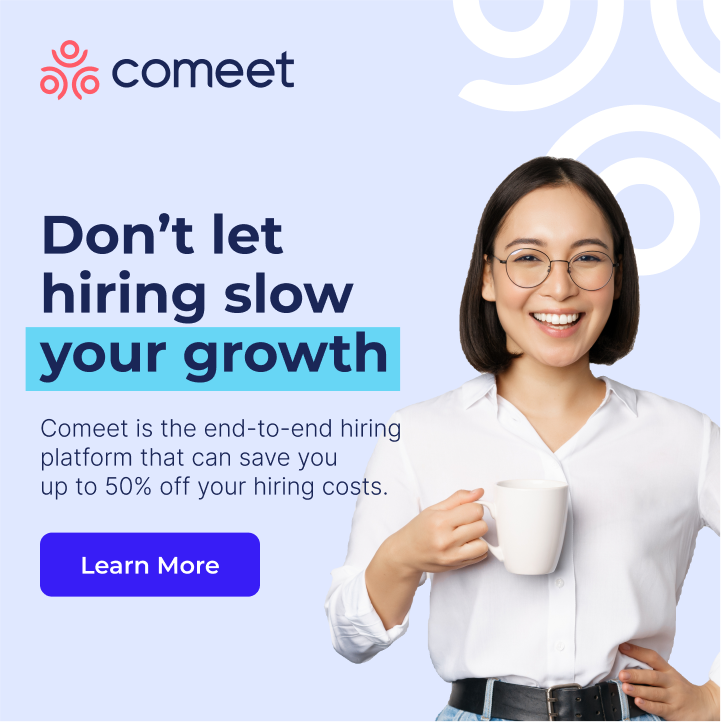Traditional recruitment relies on a recruitment team’s industry knowledge and training combined with opportunity. Data is critical to improving talent acquisition strategy by finding more opportunities and acting on them. In a Computer World report, over two-thirds of organizations surveyed said they intended to increase recruitment technology spending. Up to 45% said they plan to use artificial intelligence to assist talent acquisition.
Organizations are turning to data-driven recruitment platforms, AI, and software, to make finding the ideal candidate less costly and time-consuming. They also want to improve the candidate experience to attract and retain talent. This blog will explore why data collection is essential to the modern recruiting strategy, which data is necessary to collect, and how it can improve your talent acquisition strategy. We will provide examples of successful implementations by industry leaders, the benefits of using data for your hiring, and how an applicant tracking system (ATS) can make data-driven recruiting simple.
Why Is Data Collection Critical to Your Talent Acquisition Strategy?
A traditional talent acquisition strategy is becoming less effective in the modern recruitment market. When an organization incorporates data analytics into its recruitment strategy, creating a data-driven talent acquisition plan, it can make more sound recruitment and hiring decisions based on data from job candidates and the organization’s needs. Data can help recruiters overcome talent shortages, retention challenges, and hiring talent with hard-to-find and in-demand skills like machine learning and artificial intelligence experience.
Data-driven talent acquisition can take a large and ambiguous talent pool and turn it into a lean, high-quality pool of candidates that will likely be successful in the role you are looking to fill. It can help you identify the ideal channels to source candidates, filter candidates by the necessary skills, and provide candidates with a quick and pleasant hiring experience. The right data can help your recruitment team extend its sourcing from a local pool to a national or global pool to find pockets of candidates before your competitors.
Which Data Should You Collect?
You know that data collection is essential to improving your talent acquisition strategy, but which data should you gather? Collecting the right data sets will enhance your company’s forecasting capabilities and agility to overcome challenges and improve the candidate experience. The following data sets are necessary for any data-driven talent acquisition strategy:
- Annual turnover
- Department movements
- Time to hire
- Cost per hire
- Sourcing quality
- Candidate feedback
- Job offer acceptance metrics
Collecting data helps you create metrics for time and quality to improve your recruitment strategy and candidate experience. It can create a more sound process for talent from acquisition to retention.
Where Can You Collect Data to Improve Your Talent Acquisition Strategy?
If you are already using an ATS or recruiting software for your talent search, you may already be able to find built-in analytics and reports. You can also rely on survey forms, applications, social media, email campaigns, career sites, and data analytics from sources like Google to build metrics by combining your organization’s data with public or crowd-sourced data.
What Can You Learn and Improve Using Data Collection for Talent Acquisition?
When you combine recruiting with good data from reputable sources, you can enhance your talent acquisition strategy, from sourcing ideal candidates to retaining good hires with decisions backed by data. Data-driven recruiting doesn’t replace your industry knowledge but complements your techniques and streamlines your recruitment processes.
Understand Talent to Enhance Your Recruitment
Understanding talent pools and how to find suitable candidates within them can increase your hiring speed and reduce your cost per hire. A large talent pool can overwhelm your recruiting team, but when you rely on a data-driven strategy, you can reduce a vast talent pool to a more manageable selection of quality candidates. A data-driven talent pool puts quality over quantity to ensure you can hire quality candidates faster and more efficiently. You can narrow your candidate pool by specific skills, experience, and qualifications to only give attention to candidate profiles that meet your organization’s needs.
Pinpoint Challenges and Areas of Resistance
A data-driven talent acquisition strategy accounts for local or remote recruiting challenges based on the talent pool. It can help you locate talent pools relatively untapped by competitors and navigate the supply and demand of quality candidates. Data-driven recruitment can help you locate skills in high demand and short supply, such as experience in developing artificial intelligence systems. Using data provides a more objective method of hiring that can help your organization find quality candidates from underrepresented groups. You can also stay ahead of competitors by finding the ideal geographic location for your sourcing.
If your organization encounters challenges, such as poor job offer acceptance and long time-to-hire rates, it can significantly increase the cost per hire and result in revenue losses. You can use data to create more structured interviews to gauge candidate interest and deliver a faster, more positive hiring experience. It can also help you create more precise and more competitive offers. You can reduce long hire times by improving your sourcing based on the ideal client profile, asking better questions to qualify candidates, and creating structured interviews with data-driven recruiting.
Build New Recruitment Strategies Based on Talent Trends
Data-driven talent strategies allow you to select candidates from the best talent producers, including universities, boot camps, and certification boards. Talent from the producers can provide you with qualified candidates with current and in-demand skills. Recent graduates are eager to gain experience in their roles and are often looking for work. For Instance, if you need to hire an artificial intelligence developer, you can source your candidates from recent graduates of the top universities in AI and machine learning studies.
Using data to refine your recruitment strategy can create new opportunities for your organization to attract and retain hires. Your plan can include a data-driven employee referral program. Harvard Business Review found that an employee referral was 70% more likely to result in a good hire than a candidate sourced from a non-referral. Your organization can also rely on data to retain employees with benefits, training, and advancement opportunities.
Identify Opportunities for Employee Development
Providing new hires an opportunity to develop and learn new skills can increase employee satisfaction and reduce churn rates. A study in Forbes found that as many as 66% of employees were considering leaving their employer because they were not learning new skills and having the opportunity to pursue career advancement. Your organization can leverage data, such as interdepartmental transfers, churn rate, and candidate feedback to bolster skill-building and advancement opportunities that employees and new hires will appreciate.
Examples of Successful Data-Driven Talent Acquisition Strategies
Is data-driven talent acquisition successful? Fortune 500 organizations and some of the largest companies in the world rely on data-driven talent acquisition strategies to find, attract, and retain world-class talent. Companies like Amazon, Facebook, and Uber have adopted the use of data to improve their recruiting strategy.
Amazon’s Career Choice Program
Amazon is one organization that has made its data-driven talent acquisition success story public through Workplace Intelligence. Amazon partnered with Springboard to offer career-building training opportunities to hourly employees, allowing them to learn software engineering and data analytics skills through their Career Choice program. Amazon found that Millennial and Gen Z employees were more likely than others to consider new career opportunities due to a lack of skill training and mobility at a rate of nearly 75%.
More than 90,000 Amazon employees took advantage of the opportunity to gain skills, degrees, and certifications from the program. Amazon’s Eric Adams reported that the upskilling program is critical to retaining talent. The company found that offering upskilling to employees reduced the risk of talent loss, especially among younger employees.
Facebook’s People Analytics
In an interview with Forbes, Facebook’s Alexis Fink discussed the company’s data-driven approach to human resources. Facebook relies on data analytics to complement traditional human resources and see the organization from as many perspectives as possible. The company calls its data “people analytics” and found that using data-driven recruiting and human resources could improve workplace efficiency and give employees more opportunities to learn and better tools to succeed. It also provided more proactive, fair, and ethical methods of securing and retaining the best talent for the organization.
What Are the Benefits of Implementing a Data-Driven Talent Acquisition Strategy?
A data-driven recruitment strategy can deliver various benefits to your organization. It delivers consistent, high-quality candidates and streamlines and improves their hiring experience, reducing time and cost per hire. Data-driven talent acquisition can provide the following benefits:
- Improved forecasts: When you rely on data to improve your talent acquisition strategy, you can create accurate forecasts for your hiring needs and identify trends in recruiting. Metrics can include churn rates, candidate-to-hire time, and interdepartmental transfers. Accurate forecasts help your organization budget and improve recruitment performance. Your organization can create benchmarks to ensure that your strategy is working to help improve your recruiting efficiency monthly or annually.
- Streamline candidate-to-hire cycle: Providing candidates with a fast and pleasant hiring experience is vital to filling roles in your organization with quality candidates. A slow and inefficient hiring process allows candidates to fall through the gaps and find opportunities with your competitors. Data can create a consistent and efficient hiring experience that provides an excellent first impression on candidates and creates a lasting relationship with your organization and the new hire.
- Higher candidate quality: A wealth of quality data can help your company get ahead of trends and make better decisions to source and select quality candidates. It can also help your organization avoid bad hires that can cost time and money. When you leverage data to expand your hiring pool and hire faster with better evaluation and decision-making capabilities your candidate quality can significantly improve.
- Reduce costs: A data-driven talent acquisition strategy can significantly reduce your organization’s hiring cost by selecting candidates from a pool based on automated filters to create a small pool of quality candidates. You or your recruitment team can focus on the candidates that are a sure fit for the position, reducing time to hire and costs associated with low-quality candidate pools.
- Identify challenges: Bottlenecks and inefficiencies are common in traditional recruiting strategies and can contribute to unacceptable candidate wait times and scheduling conflicts. Comparing candidate data, such as time and cost to hire can help your organization locate and relieve bottlenecks and overcome challenges. It can also make your recruitment practices more fair, objective, and ethical by providing candidates with equal experiences and opportunities.
How Can Your ATS Make Data Collection Easier?
An ATS is a platform that helps recruiters make data-driven recruiting decisions. It can collect and analyze data to create reports, metrics, and profiles that recruiters can easily read to understand how to approve their current approach. As a recruiter, you can see statistics and metrics to improve every part of the full-cycle recruiting process.
An ATS also makes the hiring process more efficient by automating certain aspects using data provided by a recruiter, such as the skills and qualifications the organization is looking for to fill a role. It can also use data provided by the ATS, such as the top profiles of candidates based on automated sourcing and screening.
Leveraging an ATS with the right data-driven talent acquisition strategy can streamline your search for the best candidate, reducing the chance of good hires losing interest or getting a faster offer from your competitors. You and your recruiting team will no longer need to browse candidate resumes and applications individually. You can focus on candidates most likely to fill the role and succeed based on objective and data-driven analysis. ATS are also ideal for finding candidates with in-demand skills that your organization needs, including skills in emerging technologies like machine learning.
Improve Your Recruitment Strategy With Quality Data
Your organization could acquire some of the best candidates if you use a data-driven recruiting strategy with a capable ATS. An ATS provides data based on candidate pools and helps your recruitment team screen and select the best talent based on the role you are hiring for, including skills and qualifications necessary to streamline the candidate-to-hire process. It can reduce bad hires and missed opportunities by providing a good experience for the candidate and a consistent and thorough screening process.
Comeet is a recruiting platform designed to enhance your organization’s talent acquisition capabilities with data-driven candidate sourcing and intuitive, automated tools to assist you from preparing to onboarding. If you are ready to incorporate data into your talent acquisition strategy, schedule a demo with Comeet today.





























